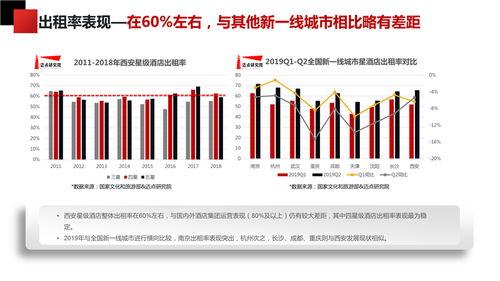空间数据挖掘理论与应用
Space big data encompasses a wide array of data sources, including observations from groundbased telescopes, space telescopes like Hubble and Chandra, satellite missions, radio telescopes, and more. These sources generate petabytes of data, containing information about celestial bodies, cosmic phenomena, radiation emissions, and more.
3.
Interdisciplinary Expertise:
Space big data mining requires expertise spanning multiple disciplines, including astronomy, statistics, computer science, and domainspecific knowledge. Collaborative efforts are essential to leverage diverse skill sets and domain knowledge effectively.Future Directions and Opportunities:
Understanding Space Big Data:
2.
Data Visualization:
Visualizing astronomical data is essential for gaining insights and communicating findings effectively. Advanced visualization techniques, including 3D rendering, interactive graphics, and virtual reality, provide astronomers with intuitive tools for exploring and interpreting complex datasets.2. "Data Science for Astronomy" Jake VanderPlas, Proceedings of the IEEE, 2017.
Significance of Space Big Data Mining:
2.
MultiMessenger Astronomy:
Integrating data from multiple sources, including electromagnetic radiation, gravitational waves, neutrinos, and cosmic rays, allows astronomers to gain a more comprehensive understanding of cosmic phenomena. Multimessenger astronomy promises to unravel mysteries like black hole mergers, neutron star collisions, and the nature of dark matter and dark energy.1.
Advancing Scientific Knowledge:
Space big data mining enables astronomers to explore the universe in unprecedented detail, uncovering new galaxies, stars, exoplanets, and other cosmic phenomena. It facilitates the discovery of rare events like supernovae, gammaray bursts, and gravitational waves, enhancing our understanding of the universe's origins and evolution.1.
RealTime Astronomy:
Advancements in data processing and computational techniques pave the way for realtime analysis of space data. Realtime astronomy enables astronomers to detect and respond to transient events promptly, such as fast radio bursts, supernova explosions, and gravitational wave events.1.
Data Volume and Complexity:
The sheer volume and complexity of space data pose significant challenges for storage, processing, and analysis. Astronomers must develop scalable algorithms and computational techniques capable of handling massive datasets efficiently.3.
Cosmic Census:
Space big data mining allows for the cataloging and classification of astronomical objects on a large scale. By identifying and characterizing millions of stars, galaxies, and other celestial bodies, astronomers can create comprehensive catalogs that serve as invaluable resources for future research.In the vast expanse of the cosmos, lies a treasure trove of data waiting to be unearthed. Space big data mining represents the fusion of astronomy, data science, and cuttingedge technology to extract valuable insights from the immense datasets collected from various celestial sources. Let's embark on a journey through the cosmos of space big data mining, exploring its significance, challenges, and future prospects.
Title: Unveiling the Universe: Space Big Data Mining
References:
Techniques and Tools in Space Big Data Mining:
2.
Data Quality and Noise:
Space observations are susceptible to various sources of noise, such as atmospheric interference, instrumental artifacts, and cosmic background radiation. Distinguishing signal from noise requires sophisticated data processing and filtering methods to ensure the reliability of results.3. "Astroinformatics: DataOriented Astronomy Research and Education" Joseph C. Jacob, arXiv:1807.06610, 2018.

1. "Big Data in Astronomy" Kirk D. Borne, Annual Review of Astronomy and Astrophysics, 2019.
3.
Citizen Science Initiatives:
Citizen science projects, such as Galaxy Zoo and SETI@home, engage the public in analyzing and annotating astronomical data. These initiatives harness the collective intelligence of volunteers worldwide, enabling largescale data analysis and discovery while fostering public interest and scientific literacy.In conclusion, space big data mining holds immense potential for advancing our understanding of the cosmos, from unraveling the mysteries of the early universe to studying exotic phenomena beyond our solar system. By harnessing the power of data science, machine learning, and interdisciplinary collaboration, astronomers can continue to explore the depths of space and expand the frontiers of human knowledge.
1.
Machine Learning and AI:
Machine learning algorithms play a crucial role in analyzing space data, enabling tasks such as image recognition, object detection, classification, and anomaly detection. AI techniques like neural networks and deep learning are increasingly used to extract patterns and insights from complex datasets.3.
Distributed Computing:
Given the scale of space data, distributed computing frameworks like Apache Hadoop and Spark are employed to parallelize processing tasks across multiple nodes or clusters. These frameworks enable astronomers to analyze large datasets efficiently, leveraging the power of parallel processing and distributed storage.Challenges in Space Big Data Mining:
2.
Astrophysical Insights:
By analyzing massive datasets, researchers can study the behavior and properties of celestial objects, such as their composition, temperature, luminosity, and dynamics. This information contributes to various fields, including stellar astrophysics, galactic dynamics, cosmology, and planetary science.标签: 空间数据挖掘应用案例 空间大数据挖掘方法 空间数据挖掘名词解释 大数据挖掘概念 空间数据挖掘案例
相关文章
